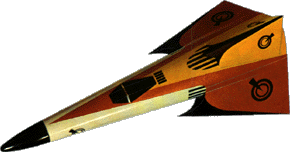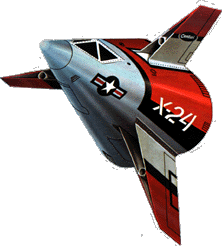- Joined
- Jan 19, 2009
- Messages
- 3,443
- Reaction score
- 1,322
I am thinking of a project where I need some non-circular tubes. such as triangle or square shape.
This is all for low power rockets.
I was thinking of getting some bar stock as a mandrel, wrap it with wax paper, then wrap it with card stock.
I was NOT going to do a spiral wrap, just wrap the length of card stock over the mandrel with an extra "tab" to glue back on itself sized to end at a corner. Basically for a square tube, the cardstock would have 5 sides, where sides 1 & 5 overlap and glue together.
So, bedsides the wax paper, should I apply anything else to the mandrel to help remove the tube when dry?
What glue should I use? Simple white glue, carpenters yellow glue, or should I use epoxy to strengthen the tube?
Should I even use card stock or use multiple layers of thinner printer paper?
And should I actually do a spiral wrap???
What else haven't I considered???????
This is all for low power rockets.
I was thinking of getting some bar stock as a mandrel, wrap it with wax paper, then wrap it with card stock.
I was NOT going to do a spiral wrap, just wrap the length of card stock over the mandrel with an extra "tab" to glue back on itself sized to end at a corner. Basically for a square tube, the cardstock would have 5 sides, where sides 1 & 5 overlap and glue together.
So, bedsides the wax paper, should I apply anything else to the mandrel to help remove the tube when dry?
What glue should I use? Simple white glue, carpenters yellow glue, or should I use epoxy to strengthen the tube?
Should I even use card stock or use multiple layers of thinner printer paper?
And should I actually do a spiral wrap???
What else haven't I considered???????







![0204230712[1].jpg 0204230712[1].jpg](https://cdn.imagearchive.com/rocketryforum/data/attachments/478/478120-70154e0d261157bd2c511ec57c00649d.jpg)
![0204230713[1].jpg 0204230713[1].jpg](https://cdn.imagearchive.com/rocketryforum/data/attachments/478/478121-600105da1ba8c07c556d8e06807f7b0a.jpg)
![0204230709[1].jpg 0204230709[1].jpg](https://cdn.imagearchive.com/rocketryforum/data/attachments/478/478122-ce9f4ffbae02fc9c1f2e97bba2c1e31c.jpg)
![0204230718[1].jpg 0204230718[1].jpg](https://cdn.imagearchive.com/rocketryforum/data/attachments/478/478123-ecb9fbc216041f62a7ab94b7a3f76058.jpg)
![0204230731[1].jpg 0204230731[1].jpg](https://cdn.imagearchive.com/rocketryforum/data/attachments/478/478125-cbee6bfc3f03a12951a04e161b8118af.jpg)
